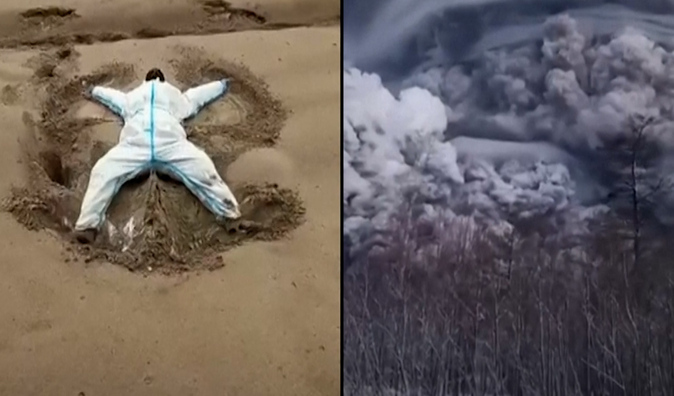One of Russia's most active volcanoes erupted on Tuesday, spewing a huge ash cloud into the sky and blanketing villages in gray volcanic dust, triggering an air alert on Russia's far eastern Kamchatka Peninsula.
The Shiveluch volcano erupted shortly after midnight, reaching a crescendo about six hours later, spewing an ash cloud over an area of 108,000 square kilometers, according to the Kamchatka Service of the Geophysical Institute of the Russian Academy of Sciences.
Lava flows that fell from the volcano melted snow and triggered a mudflow alert along a nearby road, while villages were covered in a layer of gray ash up to 8.5 centimeters deep, the deepest in 60 years.
"The ash reached 20 kilometers high, the ash cloud moved westward and there was a heavy ash fall on nearby villages," said Danila Chebrov, director of the Kamchatka branch of the Geophysical Survey.
"The volcano had been preparing for this for at least a year... and the process continues, although now it has calmed down a bit," Chebrov said.
He stated that the volcano would probably calm down now, but that the formation of new ash clouds could not be excluded. He said lava flows should not reach local villages.
The Kamchatka Volcanic Eruption Response Team (KVERT) issued a red advisory for aviation, saying "ongoing activity could affect international and low-flying aircraft."
Some schools on the Kamchatka peninsula, about 6,800 km east of Moscow, were closed and residents were ordered to stay indoors, the head of the Ust-Kamchatsky municipal region, Oleg Bondarenko, said in a Telegram post.
Lava and vapors from the Russian volcano Shiveluch.YURY DEMYANCHUK | AP
"Because of what I just saw here with my own eyes, it will be impossible for children to go to school, and in general, the presence of children here is questionable," Bondarenko said.
He said electricity had been restored to residents and drinking water was being provided.
Shiveluch, one of Kamchatka's largest and most active volcanoes, has undergone some 60 major eruptions in the past 10,000 years, the last of them in 2007.
It has two main parts, the smaller of which, the Young Shiveluch, according to scientists, has been extremely active in recent months, with a peak of 2,800 meters protruding from the Old Shiveluch, 3,283 meters high.
The scientists released images of the ash cloud spreading rapidly over forests and rivers in the far east and ash-covered villages. One of them posted an image of the depth of the ash rain: more than 8 centimeters.
- Russia
According to The Trust Project criteria
Learn more

